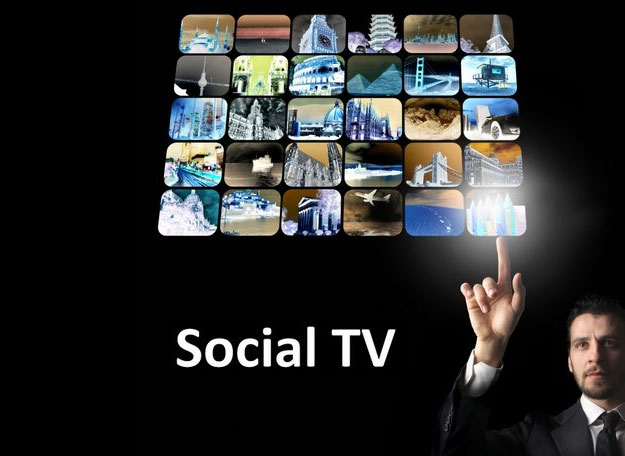
Television is changing. The industry has become flooded with new possibilities and problems thanks to the ever-evolving state of the Internet and its effects on content distribution, and cable providers as well as subscription services are trying to keep up. Combining social integration into your television experience is one of the next natural steps in this progression of inter-connected user consumption activities. Studies show that consumers currently engage in this via a multi-screen strategy, meaning the while watching TV we also have a tablet, smartphone, or laptop in use. According to Nielsen, Americans now spend 35-percent more time watching TV and using the Internet than we did a year ago. What’s more is that social networks are competing with TV shows as our entertainment default, and as cord-cutting becomes a more feasible alternative the television industry is taking note of the challenge.
And a variety of companies want to tap into this consumer behavior. New startup SocialGuide is doing just this with its iPhone, iPad, and Android app that aggregates feedback about cable TV content from your social network accounts. “Our app pulls in all the social TV conversations that are happening around TV as TV airs that are publicly available through the Twitter and Facebook APIs. These include various different types of mentions: mentions of the program names, hastags, retweets and @replies,” CEO and founder Sean Casey explains. SocialGuide was recently named one of the 10 NYC startups to watch by Time, and Casey calls it the “unified social experience to talk about a show that you’re watching.” After experimenting with how people discuss TV programming via social networks for about a year and a half, Casey and the SocialGuide team began to work on the user-end product to put this information in consumers’ hands. Casey also calls Social 100 (the data side to SocialGuide) the “Nielsen for social”: It displays what programming is most talked about on social networks weekly and monthly. “It’s an interesting barometer for networks to see how their shows are doing socially, and from the consumer standpoint interesting to see which shows are trending,” he says.


It seems important to clarify that this isn’t multitasking, only because that’s become a buzz word to characterize the behavior of this generation of consumers. The approach Motorola and Comcast are taking is pure multi-consumption: By cutting down on the devices and activities we’re engaged in while watching TV, the “task” part of it is partially eliminated. It’s a more passive experience, although it’s important to note there will likely be options to interact via an Internet TV’s remote control. But our current behavior is to have the TV on while using Facebook or Twitter or Gmail (etc, etc). So if a feed or update from these sites is integrated into our programming choices, will we put down the smartphone or close the laptop? Is it the information or the activity that consumers want? Are we using two screens because we like it or just because a better option hasn’t come along? These are just some of the questions that remain unanswered and will likely be explored by trial and error. It’s some new and relatively unknown territory manufacturers and providers are treading on, and pinpointing what exactly we like about merging our television viewing and social networking habits is still somewhat in flux. What research there is thus far shows we like to simultaneously experience these pastimes, but we’ve also seen that we are a becoming a multi-screen obsessed people.
When asked about our inclination to bounce between various screens, Casey clearly prefers multiple device experience. “My personal opinion: I have a connected TV and it’s incredibly hard to use and setup [for social integration]: You’re captive to a remote control, which is not a very smart UI device. In terms of the experience…if you want to look at your Facebook updates while watching TV, you get four at a time and then you have to scroll. All of the smart devices [smartphones, tablets, laptops] are built for real computing, with a user touch interface. It makes looking at this type of content very easy,” Casey says. “That’s what these devices are built to do.”
Of course no product is ever completely consumer-focused. While manufacturers and developers know viewers like to simultaneously watch television while engaging with social networking sites, this integration also offers providers a slew of benefits. Audience insights are a valuable commodity, so developers like SocialGuide that are creating these social-TV applications are attractive to cable companies because of the data they can potentially yield. Couple that with all the research that says customers are behind some sort of integration experience and the possibility of killing two birds with one stone seems too good to be true. What we’re skeptical about is whether or not viewers want a truly connected experience: Will apps that keep you using two screens but more ably using social networking to improve your TV experience win out over a platform like Motorola’s, where all of these features are on one screen? Maybe it’s a matter of user preference, maybe not. Considering the recently and soon-to-be released products available, we may not be wondering much longer.

